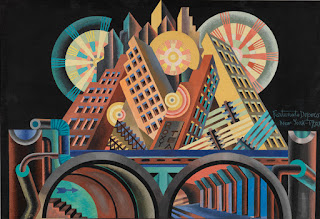Recently I was a guest in a college journalism class where students were reading my book, "A Beginner's Life." Among their questions was this: "Did you ever get shot at?" Well, sort of, I replied, but it's not in the book. I was chagrined. So I told them, very briefly, my story of the first Persian Gulf War, which I covered for the CBS Evening News with Dan Rather. Years ago I had written a chapter about it, but it wound up in the wastebasket. It seemed just a bunch of typical "war stories," an excuse to brag that I was there. Now I was kicking myself for trashing it. So I went back and re-imagined it, and rewrote it, as follows:
There is nothing in life so exhilarating, said Sir Winston Churchill, “than to be shot at, without result.”
I couldn’t see that in my twenties, when I was of draft age and the Vietnam War was escalating. I avoided the draft by accident – by the time it was reinstated in 1965, I was married and had a baby. But I wanted no part of
Vietnam. When someone at CBS suggested I volunteer for the
Saigon bureau, I wasn’t tempted. I didn’t want to risk my 23-year-old life, or leave my fledgling family behind.
Twenty-six years later in 1991, the US was rushing troops into Saudi Arabia, following Iraq’s invasion and occupation of Kuwait. Iraqi strongman Saddam Hussein was massing troops near the border of Kuwait and Saudi Arabia, and could easily resume his march of conquest, sweeping down through the nearly unpopulated, lightly defended desert kingdom. The US was preparing to drive him back – out of Kuwait, away from Saudi Arabia and its huge American oil operations.
By then I had a new family, and six children altogether, two of them under six. But this time, I felt the urge. I had survived nearly half a century, and was willing to risk the balance of my life on a good bet that I would come home safe, and war would be an incomparable adventure. I’d be cautious, and not take any stupid risks. I just wanted to see.
As a journalist, I wanted to witness the kind of destructive power that shapes the world we live in. There is nothing like a war to alter the course of history. Developments that would happen over decades in peacetime, or never happen at all, happen within days or hours in a war. War is history speeded up, news that breaks faster than you can write it.
As an egoist, I wanted the badge of honor that goes with being a war correspondent, the badge my father never earned. In my mind at least, it’s what separates the real journalists from those who would prefer to write about the world from the safety of their desks. I also had a morbid curiosity about the death, destruction, and danger of wartime. I’d seen the aftermath in London as a child, and I’d been on the edge of violence in Tiananmen Square, but had never been in an actual war zone. I wanted to feel the frisson of mortal fear.
As a father, my feelings were mixed. I didn’t want my family to worry about me, though I knew they would. At the same time, I wanted my children to have a father they could look up to, not one they felt sorry for. I felt sorry for my father because he felt sorry for himself. He never did the things he really wanted to do, never became the journalist he wanted to be, largely because of his own timidity. I had inherited some of that timidity, but I wasn’t going to let it rule my life. I didn't consult my wife beforehand, or ask permission. One day I just screwed up my courage, walked into Tom Bettag’s office, and said: “I’d like to volunteer for duty in the war zone.”
A family man himself, Bettag would go anywhere for a story, but he never would have sent me into a war zone on his own. He warned me on the spot that we might wind up in Baghdad with bombs falling around us. I gulped when he said that, but the die was cast. I stuck with my offer, and he accepted.









